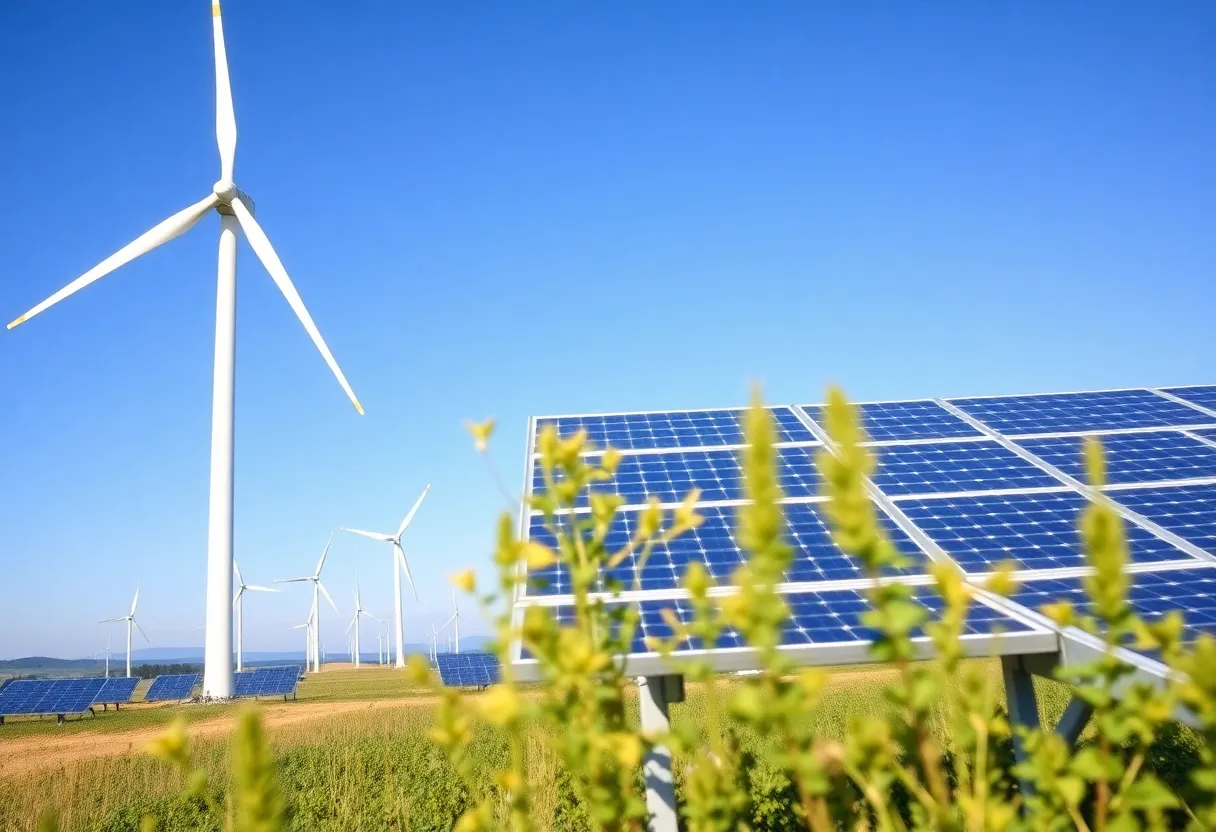News Summary
The IRS has announced new guidance imposing stricter construction requirements for wind and solar projects seeking tax credits, impacting those racing against the 2026 deadline. With the elimination of the 5% Safe Harbor option, projects must demonstrate significant physical work to qualify. The change is part of broader federal efforts to reshape energy incentives amidst political tensions. Industry representatives have raised concerns that these stricter standards may impede renewable energy development and increase energy costs.
New IRS Guidance Tightens Construction Requirements for Wind and Solar Tax Credits Ahead of 2026 Deadline
Washington, D.C.—On August 15, 2025, the Department of Treasury and the Internal Revenue Service (IRS) issued new guidance establishing more stringent requirements for qualifying wind and solar energy projects to receive tax credits, with implications for projects intending to meet the upcoming construction deadline of July 4, 2026.
Background and Context
The new regulations respond to recent legislative and executive actions aimed at reshaping federal energy incentives. The guidance follows President Donald Trump’s executive order issued on July 7, 2025, which prioritized reducing subsidies for energy sources considered less reliable or heavily foreign-controlled. Additionally, the legislation known as the One Big Beautiful Bill, enacted in July 2025, capped tax credits for wind and solar facilities placed in service after December 31, 2027, unless certain construction milestones are met by July 5, 2026.
Key Provisions of the New Guidance
The IRS notice, designated as Notice 2025-42, clarifies the criteria for what constitutes the “beginning of construction” necessary for facilities to qualify for tax credits under Sections 45Y and 48E, also known as the Tech-Neutral Tax Credits. These regulations are prospective, applying to projects beginning construction on or after September 2, 2025.
Impact on Construction Start Standards
The guidance significantly narrows previous provisions, notably eliminating the 5% Safe Harbor option for most wind and solar projects. This means that simply incurring a small expense—such as surveys or test drilling—will no longer qualify as initiating construction. Instead, projects must show “physical work of significant nature” on-site or off-site, under a binding contract, which could include activities like equipment manufacturing or substantial on-site construction activities.
Physical Work Test and Safe Harbor
The Physical Work Test remains a core requirement, defining that a project begins when significant physical work has commenced. This can involve onsite construction or offsite work that is legally binding, like manufacturing equipment. The Continuity Safe Harbor also remains in place, allowing projects that are placed in service within four years of beginning construction to meet ongoing development requirements. While documentation of continuous efforts is advisable, specific requirements are not detailed in the new guidance.
Projects and Timing Details
Facilities meeting the 5% Safe Harbor before September 2, 2025, remain eligible for tax credits. Solar facilities with an output capacity of less than 1.5 megawatts can still utilize the Safe Harbor. These provisions are designed to accommodate smaller projects and those that started construction prior to the new rules taking effect.
Industry Response and Concerns
The renewable energy sector has expressed concerns over the more restrictive guidance, asserting that the tightened standards could hinder the development of low-carbon energy sources and increase electricity costs. Critics argue that the new rules create additional hurdles for wind and solar projects to qualify for federal incentives, potentially slowing the pace of renewable deployment.
Legislative and Political Context
The revised standards reflect ongoing political tensions, especially within the Republican party, which was divided during the passage of the legislation. Some members favored stricter controls on renewable tax credits, viewing them as a means to promote energy independence and reduce reliance on foreign-controlled sources. Supporters of the guidance maintain it enforces a clearer and more enforceable standard for tax credit qualification.
Conclusion
Overall, the new IRS guidance emphasizes a more rigorous approach, requiring demonstrable physical work of significant nature to prove the beginning of construction for wind and solar projects seeking tax credits. The changes are set to influence project planning and development timelines, with stakeholders closely monitoring the implementation and potential impacts on renewable energy growth as the 2026 deadline approaches.
Deeper Dive: News & Info About This Topic
HERE Resources
Additional Resources
- The Hill: Treasury Guidance on Wind and Solar Tax Credits
- Utility Dive: Treasury Commence Construction for Wind and Solar Tax Credits
- Wall Street Journal: European Renewable Stocks Rise After U.S. Tax Credit Guidance
- Recharge News: Wind Power Stocks Surge After U.S. Tax Credit Specification
- Politico Pro: Treasury Reportedly Tightens Screws on Tax Credits for Renewables
Author: STAFF HERE VIRGINIA BEACH WRITER
The VIRGINIA BEACH STAFF WRITER represents the seasoned team at HEREVirginiaBeach.com, your trusted source for actionable local news and information in Virginia Beach, Virginia Beach City, and beyond, delivering "news you can use" with comprehensive coverage of product reviews for personal and business needs, local business directories, politics, real estate trends, neighborhood insights, and state news impacting the region—supported by years of expert reporting and strong community input, including local press releases and business updates, while offering top reporting on high-profile events like the Virginia Beach Neptune Festival, East Coast Surfing Championship, and military homecoming celebrations, alongside key organizations such as the Virginia Aquarium, Virginia Beach Convention Center, and Oceana Naval Air Station, plus leading businesses in tourism and defense like Busch Gardens and Northrop Grumman, and as part of the broader HERE network including HEREWilliamsburg.com, providing credible, in-depth insights into Virginia's vibrant landscape. HERE Virginia Beach HERE Williamsburg





